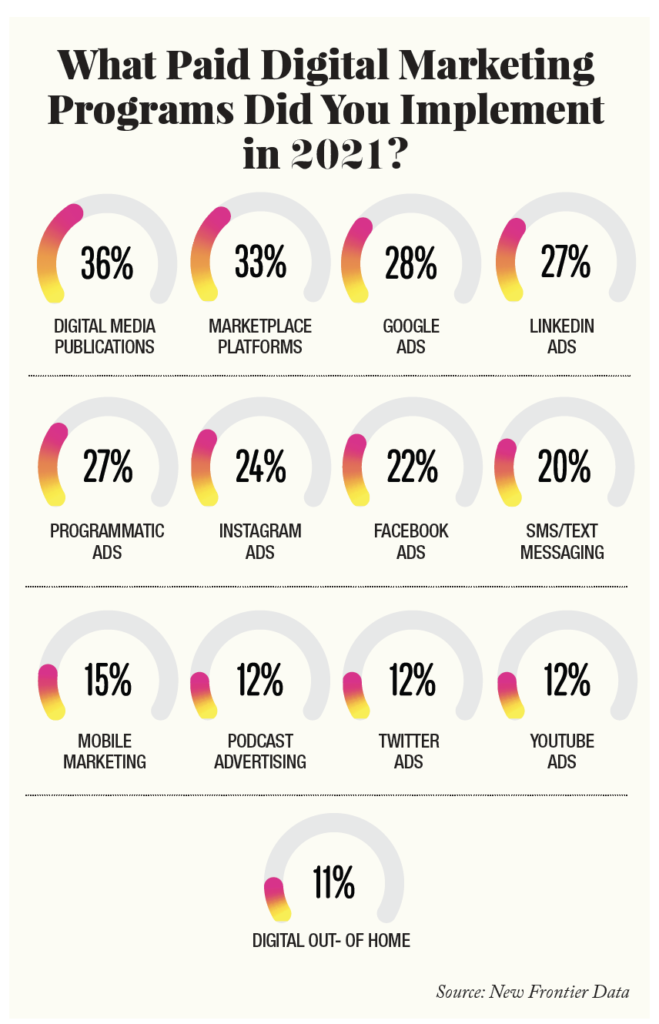In a recent marketer survey conducted by NXTecK and the Cannabis Marketing Association, more than 80 percent of respondents said getting their message to their desired audience was slightly to extremely difficult. However, the formula successfully used by many consumer-packaged-goods (CPG) marketers should provide a helpful guide for cannabis marketers.
The first step in any marketing campaign is understanding and connecting with the audience. Who are the target consumers? What are their hobbies? How, why, and how often do they consume cannabis, and how much do they spend? Once brands can answer these and other critical questions, they can create meaningful consumer connections with impact statements delivered through websites, blogs, and other earned/owned/paid media.
From there, expand the marketing mix, building on the key themes and messages consumers have come to identify with your brand. Utilize social and paid search to connect with audiences at the top of the funnel to raise brand awareness, but don’t overspend. Instead, work programmatic advertising into the mix. Backed by audience data, it can be a less expensive, repeatable workhorse for brands aiming to engage a target audience on a shoestring budget. Finally, be sure to employ an attribution solution to connect online interaction to offline sales and assign varying credit to each engagement that results in a purchase. This advertising-performance feedback loop helps ensure tomorrow’s media buys will be even more effective.
The haystack keeps growing
For marketers who do not modify their approach, getting the right message to the right audience likely will become increasingly difficult as the number of cannabis consumers in the United States continues to grow at a rapid clip. Normalization is outpacing legalization significantly. Currently, 74 percent (52 million) of U.S. cannabis consumers have access to legal products; that number could reach 96 percent (71 million) by 2030.
With 35 percent of consumers using cannabis at least once per day and 55 percent spending more than $50 per purchase on average, marketers who fail to develop a detailed understanding of their audience will find themselves navigating an increasingly competitive U.S. market that could be worth as much as $72 billion by 2030. As more states and consumers continue to embrace the plant, the potential for marketing waste and the number of brands competing for consumer attention will increase substantially.
The current state of marketing
Conducted in the first quarter of 2021 by the Cannabis Marketing Association and NXTecK, New Frontier Data’s adtech division, this open online survey targeted industry marketers to better understand and benchmark the current state of marketing practices with a focus on digital. The full findings will be available in a report this month, and many key data points from the survey suggest there is a need across the industry to invest in resources and training when it comes to digital marketing.
Most marketers need to accomplish a lot with only shoestring budgets at their disposal. Budget constraints (63 percent), regulatory limitations (47 percent), and staffing constraints (46 percent) were the top three digital marketing challenges in 2021. Forty-seven percent have an annual marketing budget of less than $50,000; only 5 percent have annual budgets greater than $1 million.
Eighty-three percent of respondents indicated digital marketing was their top promotional channel. Marketers were more evenly split when it came to their top digital marketing goals for 2022, with brand awareness (54 percent), lead generation (53 percent), and product purchase (31 percent) as the top three.

Misusing social and paid search?
Respondents reported using social media advertising heavily in their marketing mix. Twenty percent reported implementing Instagram advertising programs in 2021. LinkedIn campaigns were implemented by 25 percent, and 21 percent implemented Facebook campaigns. Even so, delivering the right message to the desired audience has stumped more than eight in ten marketers.
Social media can help brands and dispensaries build relationships organically, but problems often arise when paid social is deployed to build awareness if the connection between the marketer and the consumer is trivial or weak. Social channels are valuable and effective when marketers build connected narratives that consumers understand and see as authentic and engaging. When consumers use social media, they’re instinctively in a social mindset; interrupting this experience with a direct sales pitch is counterproductive.
On shoestring budgets, marketers can’t afford to waste money on ineffective ads attempting to connect with the specific subsets of consumers most likely to purchase their products. Use social media to tell your story and build engagement, then turn to more cost-effective channels for direct response. Programmatic advertising is one channel attracting a growing number of marketers.
Getting comfortable with programmatic
Although only 27 percent of respondents reported implementing programmatic ad campaigns in 2021, programmatic’s role seems to be growing. Only 67 percent said they “don’t run programmatic ads” when asked in March in a different survey. Together, these findings show a roughly 6-percent increase in usage from last year to the present. However, many respondents also admitted to a lack of knowledge, with 69 percent reporting only a basic understanding of programmatic, at best.
Simply put, programmatic campaigns allow advertisers to automatically buy digital ad space to reach the right audiences across publisher networks via data and technology. Advertisers can select target audiences, choose impression/click volume, and bid what they’re willing to pay. The volume of programmatic ad networks separates the channel from others like social and paid search, as does its often considerably lower pricing.
Although programmatic usage is low and the channel has the potential to become one of marketers’ most cost-effective targeted ad channels, brands should not start throwing money at programmatic just because it seems inexpensive. In fact, programmatic should not be the first promotional effort for most new cannabis brands because buying programmatic ads without a specific audience in mind could make the channel less effective and inflate costs.
While established brands with well-defined target audiences can use this knowledge to build cost-effective programmatic campaigns right out of the gate, new brands should first invest in better understanding their target audience and only implement programmatic campaigns once they can use that knowledge to guide them. Even small audience sample sizes such as a couple thousand website visitors can inform very targeted programmatic campaigns and connect brands to their target audiences via mobile, online, and point-of-sale advertisements. Programmatic campaigns with location-based guardrails can be set to serve ads to individuals only when they are present in legal markets and near dispensaries that sell the advertised products.
Discover, engage, convert
The attributes that define great cannabis marketing campaigns are by and large the same qualities that signal excellence in any successful CPG marketing campaign. Great campaigns tell great stories. They build on an intimate understanding of the audience and create meaningful consumer connections with impact statements delivered across the marketing mix. As these relationships are formed, brands can generate sales more effectively. By using each marketing channel for its ideal purpose — social and paid search to discover, owned and earned media to engage, and programmatic to convert — marketers can be both efficient and productive.

Marketing technology expert Gary Allen serves as chief executive officer at New Frontier Data. Over the course of his career, he has led the development of technologies that were later acquired by Google, DoubleClick, Kantar Media, and other market leaders. Prior to joining New Frontier, Allen founded ModernMinds, a strategy consulting firm focused on startups in the technology space.













[…] revenue and our financials. The non-cannabis side is extremely lucrative, and it gives us a way to reach a lot of consumers who may not use cannabis. I think it creates a very cool, exciting hype around the brand. A lot of […]
[…] which types of data you want to collect. Broadly speaking, there are four types of consumer data collected by digital marketers: third-party, first-party, second-party, and zero-party. Each variety has utility, and […]
[…] to in traditional retail settings. Ecommerce solutions provide online shopping capabilities. Data and analytics services help dispensary owners understand and use industry-wide data for inventory management and […]
[…] then can take those customer attributes and build lookalike audiences in their marketing suite to target similar individuals with compelling offers to draw them to the dispensary. Of course, none of that is possible without a way to analyze the […]
[…] Brands also struggle with creativity and finding the best ways to reach their audience. […]
[…] year’s New Frontier Data/Cannabis Marketing Association report expressed some level of difficulty delivering their messaging to target audiences. And while some platforms have been easing restrictions, it’s still a […]
[…] to help marketers with keyword research for SEO content, provide actionable insights about a new target audience, and distill complex messages into clear communications for better engagement across a variety of […]